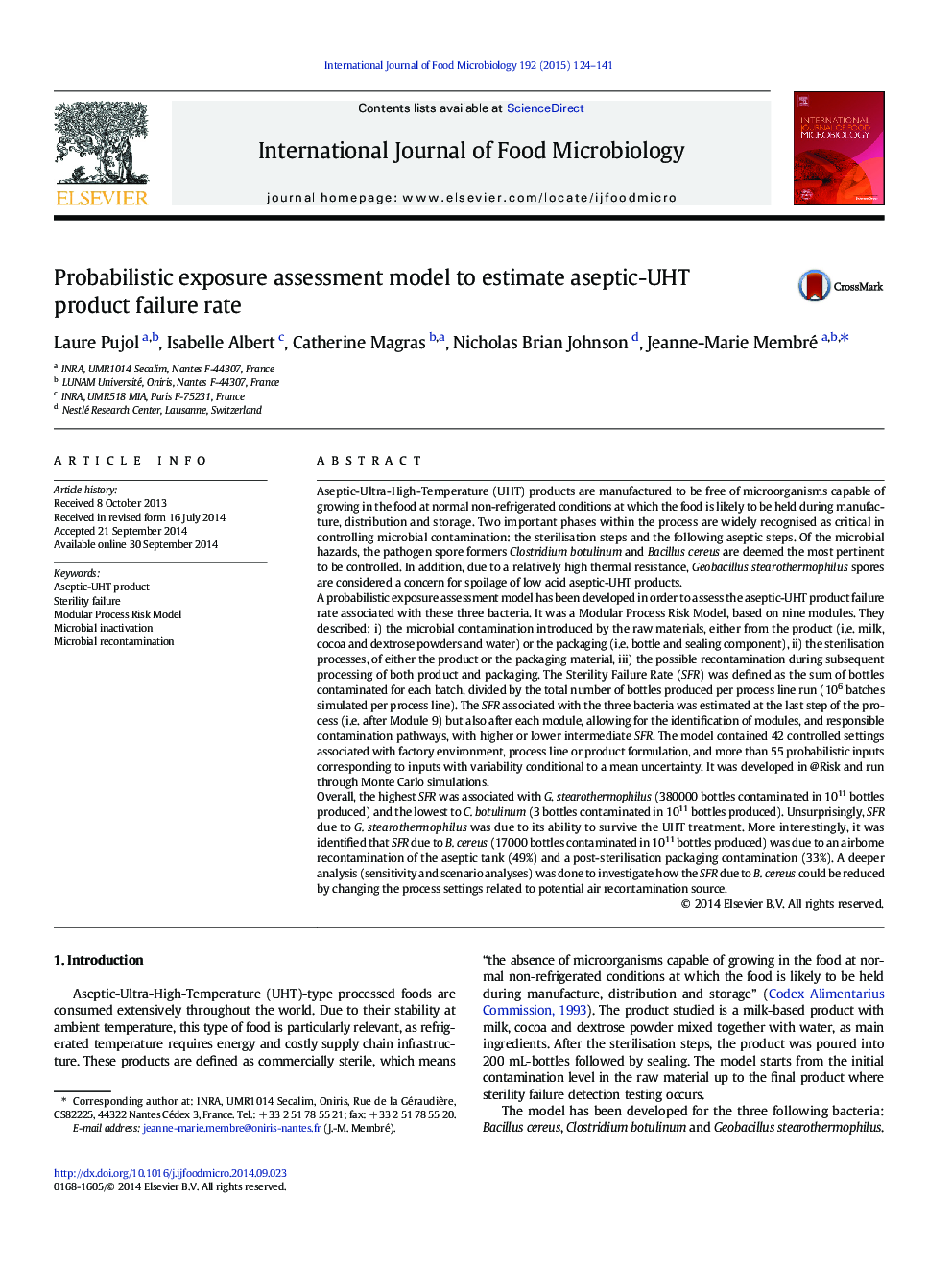| Article ID | Journal | Published Year | Pages | File Type |
|---|---|---|---|---|
| 6289974 | International Journal of Food Microbiology | 2015 | 18 Pages |
Abstract
Overall, the highest SFR was associated with G. stearothermophilus (380000 bottles contaminated in 1011 bottles produced) and the lowest to C. botulinum (3 bottles contaminated in 1011 bottles produced). Unsurprisingly, SFR due to G. stearothermophilus was due to its ability to survive the UHT treatment. More interestingly, it was identified that SFR due to B. cereus (17000 bottles contaminated in 1011 bottles produced) was due to an airborne recontamination of the aseptic tank (49%) and a post-sterilisation packaging contamination (33%). A deeper analysis (sensitivity and scenario analyses) was done to investigate how the SFR due to B. cereus could be reduced by changing the process settings related to potential air recontamination source.
Keywords
Related Topics
Life Sciences
Agricultural and Biological Sciences
Food Science
Authors
Laure Pujol, Isabelle Albert, Catherine Magras, Nicholas Brian Johnson, Jeanne-Marie Membré,
